By Abrar Hussain, Ashley Ngu, and Dana Neufville
As a government contractor, adherence to NIST SP 800-171 requirements is not just an option, but an essential mandate. NIST SP 800-171 Revision 3 updates have been streamlined to improve clarity and customer understanding. This blog is focused on the purpose, significant changes, and future directions of NIST SP 800-171 Revision 3.
Key Takeaways
- The latest NIST SP 800-171 revisions reflect the controls and families in NIST SP 800-171 Revision 2 in a more simplified way, helping improve clarity and streamline the process to protect Controlled Unclassified Information (CUI) when the data is stored, processed, or transmitted in nonfederal systems and organizations.
- This article focuses on the updated security requirements, tailoring criteria, and supplemental resources of NIST SP 800-171 Revision 3.
- Although the NIST SP 800-171 Revision 3 has been published, organizations currently do not have a deadline to be in compliance with the updated security requirements. Organizations should practice due diligence by preparing for the transition now.
Introduction to NIST SP 800-171 Revision 3
In response to the evolving cyber threat landscape, the National Institute of Standards and Technology (NIST) has introduced Revision 3 of SP 800-171. This revision is pivotal in addressing the sophisticated threats that target CUI housed in nonfederal systems and organizations. The strategic updates are designed to bolster the defenses that protect this sensitive information, which is crucial for national security and organizational integrity.
Importance of Protecting Controlled Unclassified Information
The protection of CUI against unauthorized access and cyber threats is more critical than ever. This update emphasizes enhancing security measures to safeguard CUI from high-level threats that could potentially compromise personal data, intellectual property, and even national security. Organizations that focus on CUI underscore the importance of robust security practices in maintaining the confidentiality, integrity, and availability of sensitive information.
Purpose of the Update and Its Significance
Revision 3 of NIST SP 800-171 aims to bring clarity to the security requirements, making it easier for organizations to implement and maintain effective security controls. This revision aligns more closely with NIST SP 800-53 Revision 5, providing a streamlined approach to compliance that enhances understanding and application of the standards. Specifically, addressed are:
- Alignment with Broader NIST Frameworks: This update facilitates a better integration with other NIST cybersecurity frameworks, which is instrumental in building comprehensive and cohesive security strategies across various organizational structures.
- Future-Proofing Information Security: The revision anticipates future cybersecurity challenges and proactively addresses them. By simplifying the language and structure of the requirements, NIST SP 800-171 Revision 3 helps organizations build resilient infrastructures that can adapt to and mitigate emerging threats.
- Consistent Defenses Against High-Level Threats: The update ensures that defenses against cyber threats remain robust and effective, safeguarding sensitive information from increasingly sophisticated cyber attacks.
Updated Security Requirements
The significant changes include more comprehensive details, deletions, and changes in security requirements to reflect controls and families in NIST SP 800-53 Revision 5 in a more simplified way.
- The distinction between basic and derived requirements have been removed.
- Outdated and redundant requirements have been removed.
- Families that have withdrawn controls include: Access Control, Awareness and Training, Audit and Accountability, Configuration Management, Identification and Authentication, Maintenance, Media Protection, Physical Protection, Risk Assessment, Security Assessment, System and Services Acquisition, System and Communications Protection, and System and Information Integrity.
- The controls that have been withdrawn have been incorporated into other related controls (ORCs).
- Specificity and grouped requirements were increased.
- Organization-defined parameters (ODPs) were reduced by half.
Updated Tailoring Criteria
The tailoring categories and decisions have been reevaluated including:
- The elimination of the Non-Federal Organization (NFO) category.
- New tailoring categories have been introduced for controls addressed by ORCs.
- Certain controls have been reclassified from the SP 800-53B moderate baseline.
Added Supplemental Resources
Added supplemental resources include:
- Tailoring and mapping tables have been updated.
- Transition mapping tables outlining the changes between Revisions 2 and 3 were implemented.
- NIST developed a prototype overlay using NIST SP 800-53 Revision 5. This overlay provides simplicity in aligning NIST SP 800-171 security requirements with NIST SP 800-53, the two most commonly used NIST resources.
Implications and Future Directions
The key takeaways from the transition from Revision to 2 to 3 are:
- The revision has gone from 110 requirements to 97 appearing to be shortened, but the controls have just been combined to reduce redundancy.
- Organizations have more input with the added ODPs.
- NIST SP 800-171 A significantly changed. There are now 422 determination statements, a 32% increase.
- Non-federal organization (NFO) controls have been removed.
- A new tailoring category has been added.
- Three new security control families have been added: Planning (PL), System and Services Acquisition (SA), and Supply Chain Risk Management (SR).
Currently, contractors are not required to comply with Revision 3 but should be looking to transition within the next 2 to 3 years. This gives organizations additional time to plan and budget for their transition. The Department of Defense will be implementing these changes shortly as well, but for now, they are only required to meet the standards of Revision 2.
Conclusion
NIST SP 800-171 Revision 3 has been updated to provide more detailed information for security requirements. It offers more flexibility in implementation while also aligning with the security requirements language used in NIST SP 800-53. Organizations should stay proactive and use the additional time to begin planning for the imminent transition. While immediate compliance with Revision 3 is not mandatory, organizations are encouraged to begin transitioning as soon as possible. Early adoption of these updated standards can significantly benefit organizations by enhancing their cybersecurity posture and ensuring readiness for future regulatory requirements. Being proactive in cybersecurity practices is not just beneficial, it is essential for maintaining trust and ensuring the protection of critical assets.
Stay Ahead of the Game: Ensure Your NIST SP 800-171 Compliance for DoD Contracts
IBSS will use our more than 20 years of corporate DoD cybersecurity experience to prepare you for NIST SP 800-171 compliance. We specialize in developing cybersecurity strategies that align with organizational business processes to detect and/or prevent cyber attacks. We identify threats and vulnerabilities and we assist organizations with managing risks to critical data. We provide expert support to promote compliance with the Defense Federal Acquisition Regulation Supplement (DFARS), Federal Information Security Modernization Act (FISMA), Federal Risk and Authorization Management Program (FedRAMP), NIST SP 800-171, and Privacy requirements.
Contact us now to get a free consultation on how to develop your company’s NIST SP 800-171 SSP.





